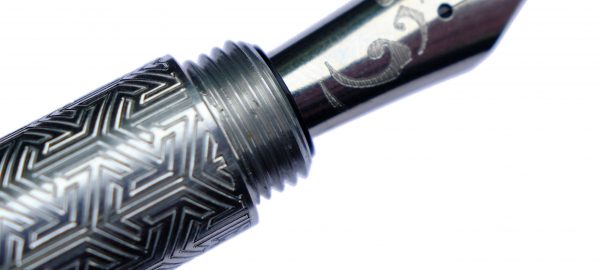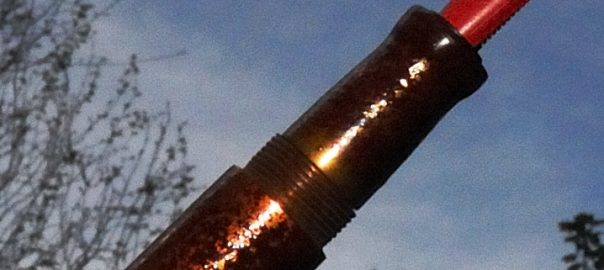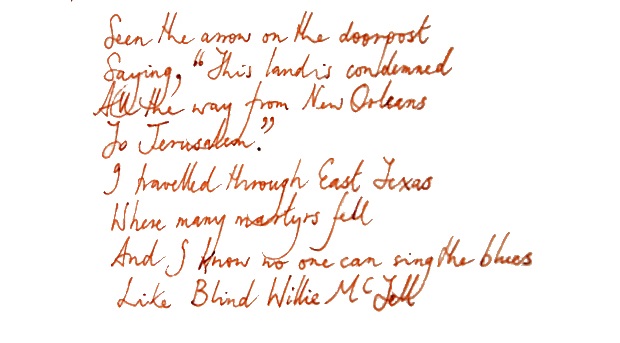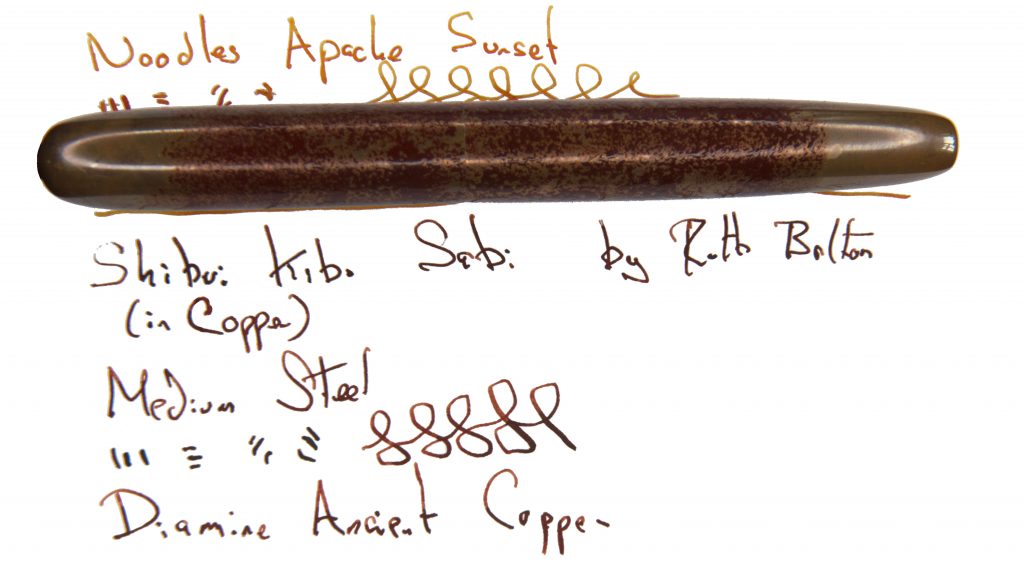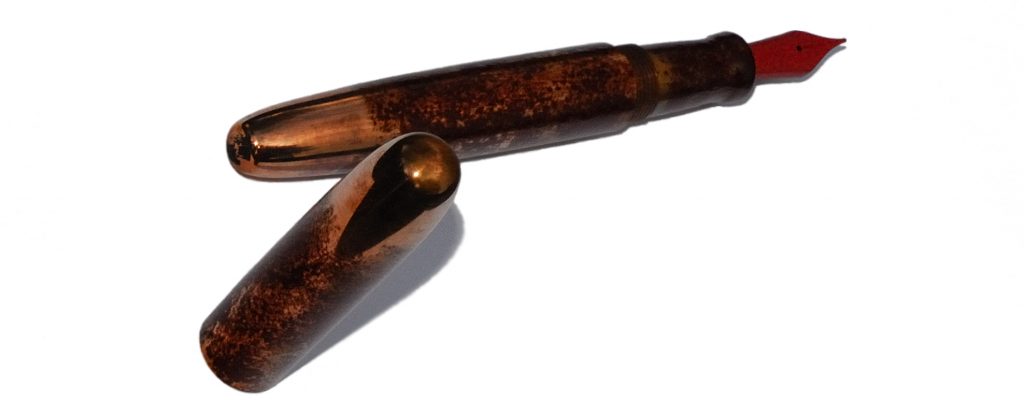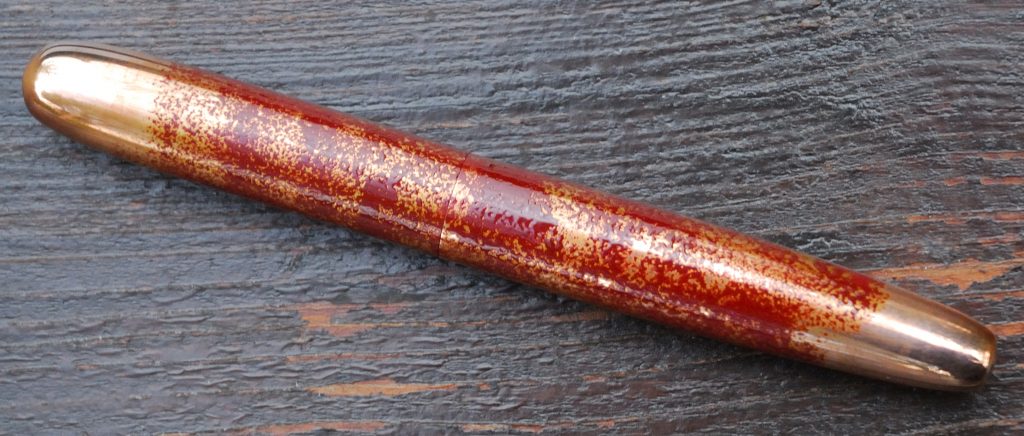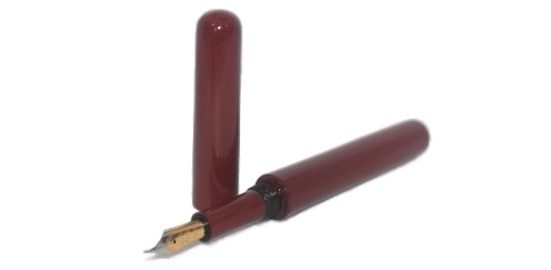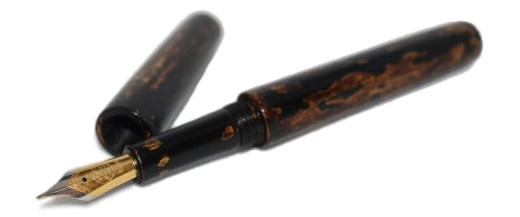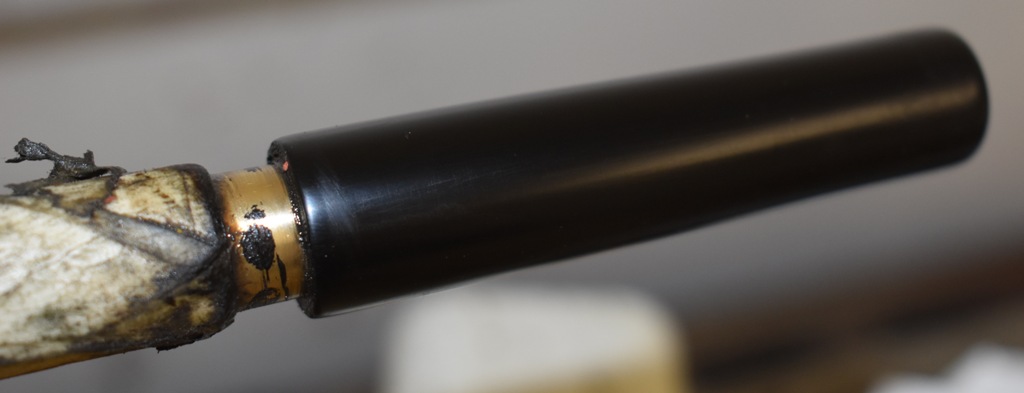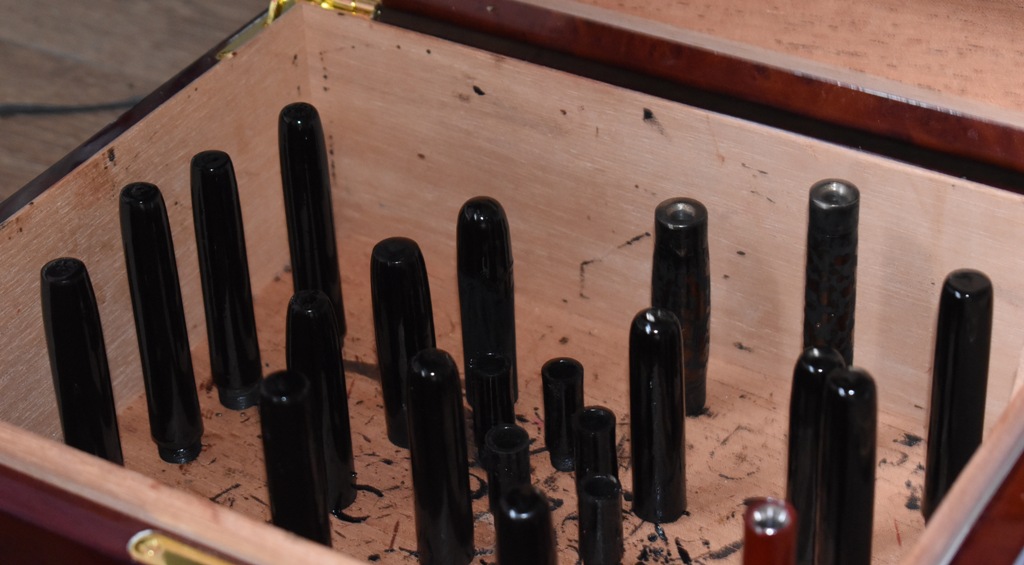A little bit of history We’ve been tracking the development of Ruth’s Japanese-influenced Tyneside pen project Shibui-North pretty much since its inception, and the results keep tempting us to try things out for ourselves. So when the little Kitsune’s big sibling came along, we had to give it a run!
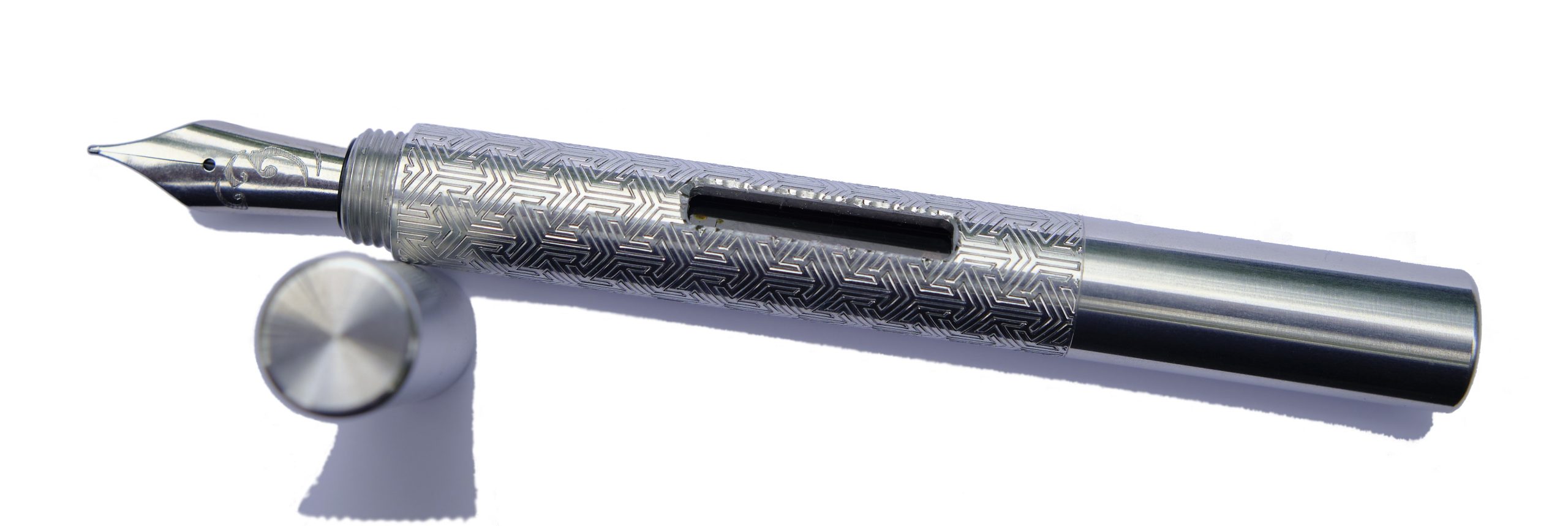
How it looks Like a medium-sized long-ish pocket pen, which is pretty much what it is. Several hallmarks make it stand out, however: the cut-out ink window, the Hokusai wave inscription on the nib and the geometrically etched barrel imprint. Bland and everyday it certainly ain’t.
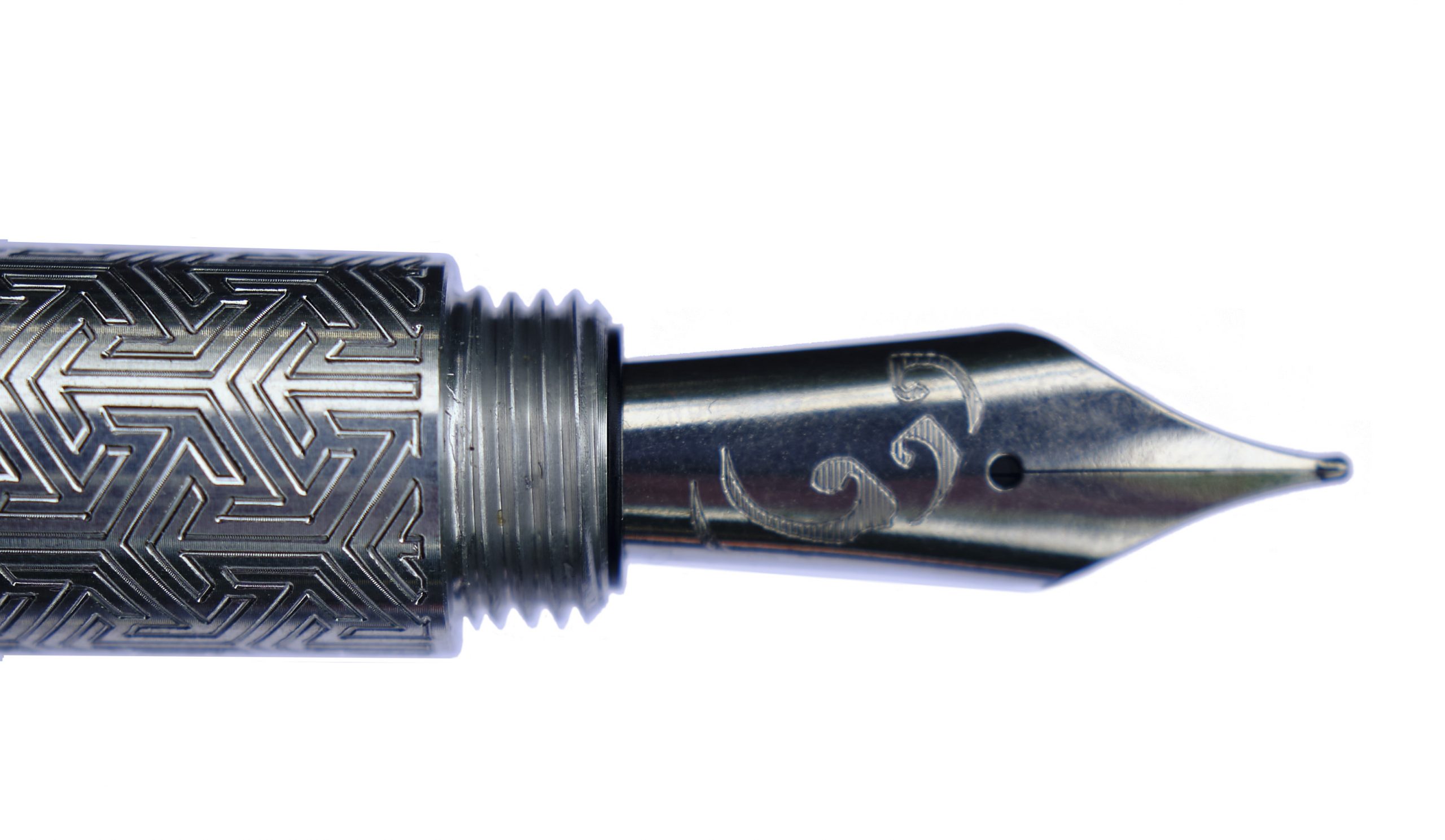 How it feels Solid, grippy and, thanks to aluminium construction, fairly light. That said, balance is a personal thing and this seems to suit those who particularly like medium-length pens best. Fans of small pocket pens may find it a touch over-long for perfect balance and, conversely, full-size pen afficionados may feel it’s a bit on the short side. Much comes down to personal preference, with this one.
How it feels Solid, grippy and, thanks to aluminium construction, fairly light. That said, balance is a personal thing and this seems to suit those who particularly like medium-length pens best. Fans of small pocket pens may find it a touch over-long for perfect balance and, conversely, full-size pen afficionados may feel it’s a bit on the short side. Much comes down to personal preference, with this one.
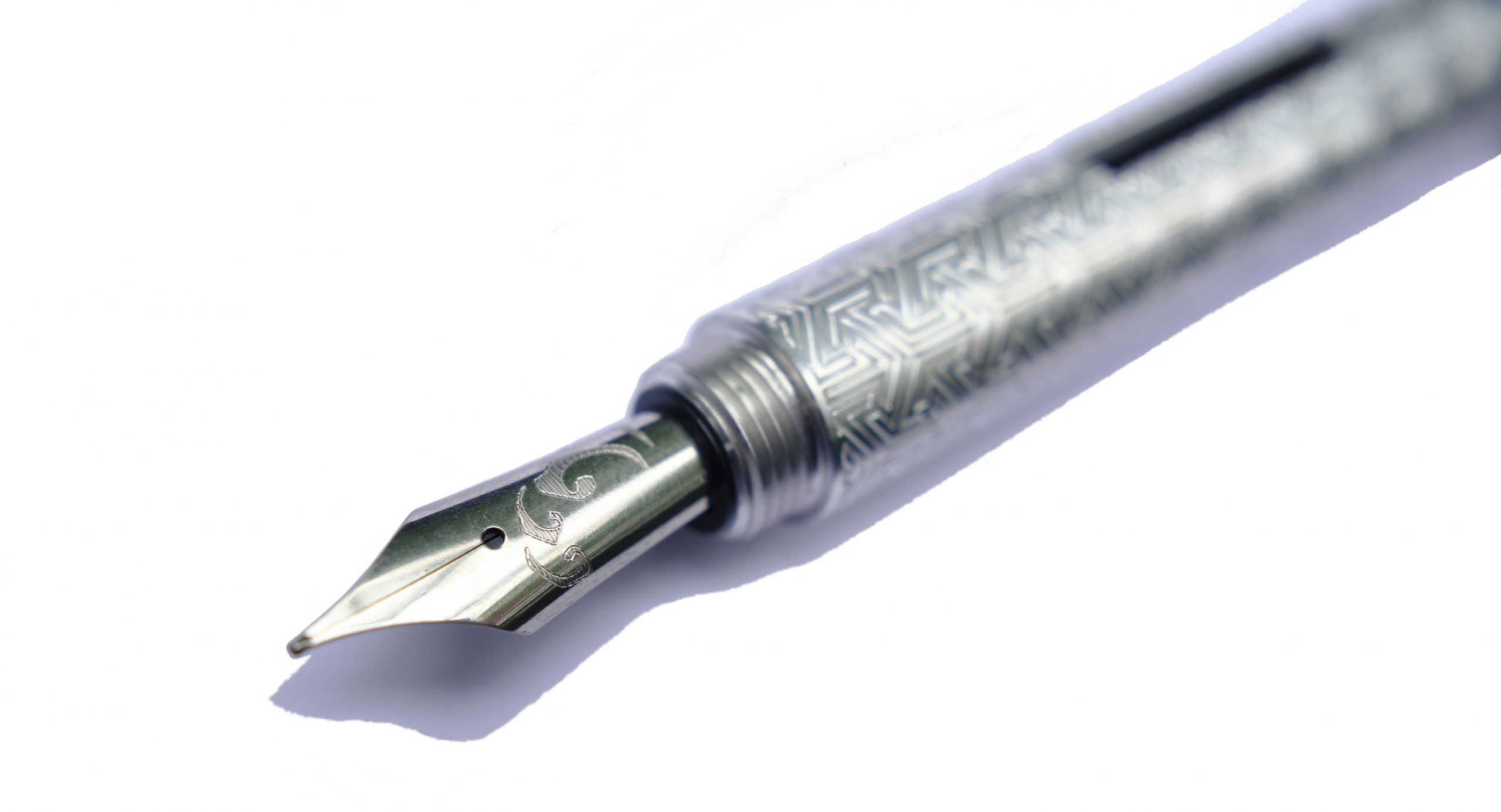 How it fills This is the converter version of the Kitsune, which tells you most of what you need to know. There’s space for a full size converter, and a blind cap which twists off at the back end to make refilling a touch simpler. The resulting ink capacity is a bit of a step up from the tiny converters which fit small pocket pens, too.
How it fills This is the converter version of the Kitsune, which tells you most of what you need to know. There’s space for a full size converter, and a blind cap which twists off at the back end to make refilling a touch simpler. The resulting ink capacity is a bit of a step up from the tiny converters which fit small pocket pens, too.
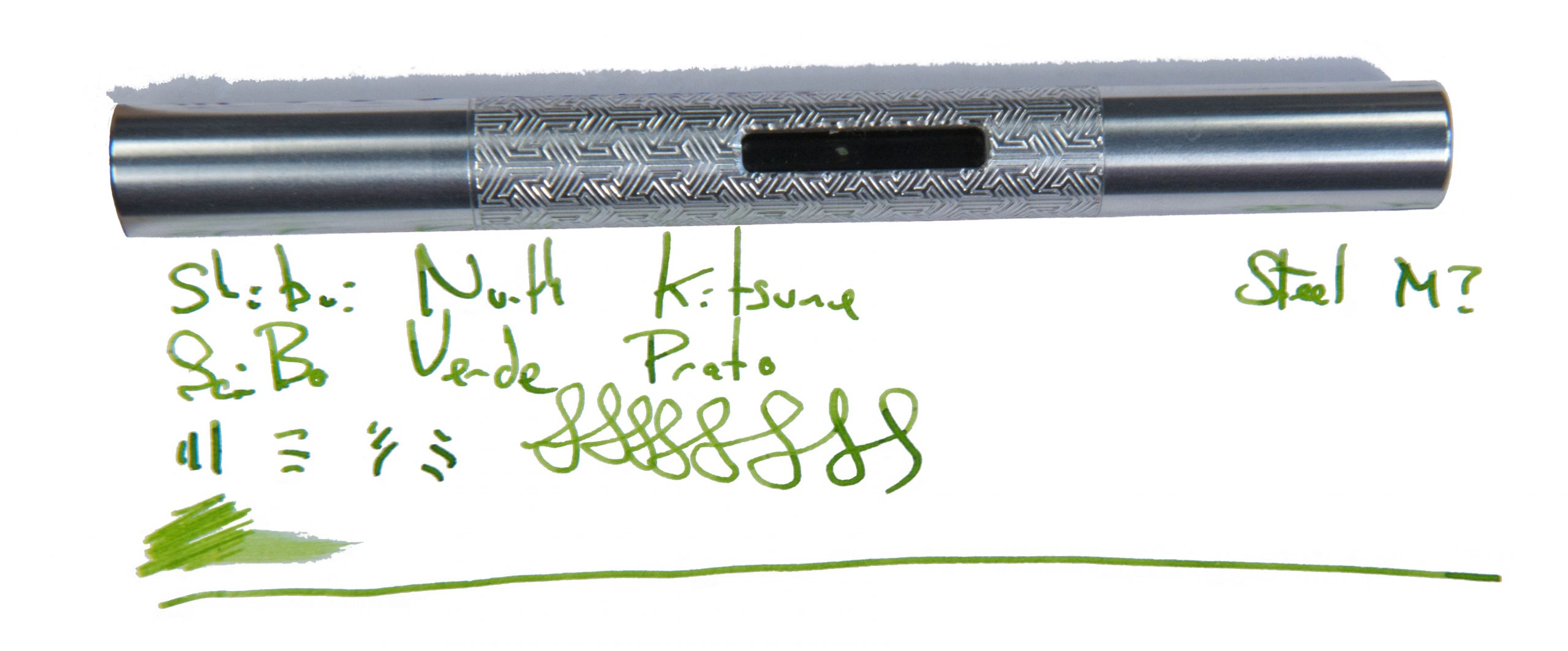
Crucially, how it writes… It’s a Bock steel nib, so writes just as expected; fairly smoothly, with reliable flow and the slightest hint of bounce.

Pen! What is it good for? To our minds this is still a pocket pen, albeit for people with relatively large pockets – if only in the literal sense. It could even be an everyday note-taker – although with a robust set of threads undoing that cap does involve a few seconds of rotation in between jottings.
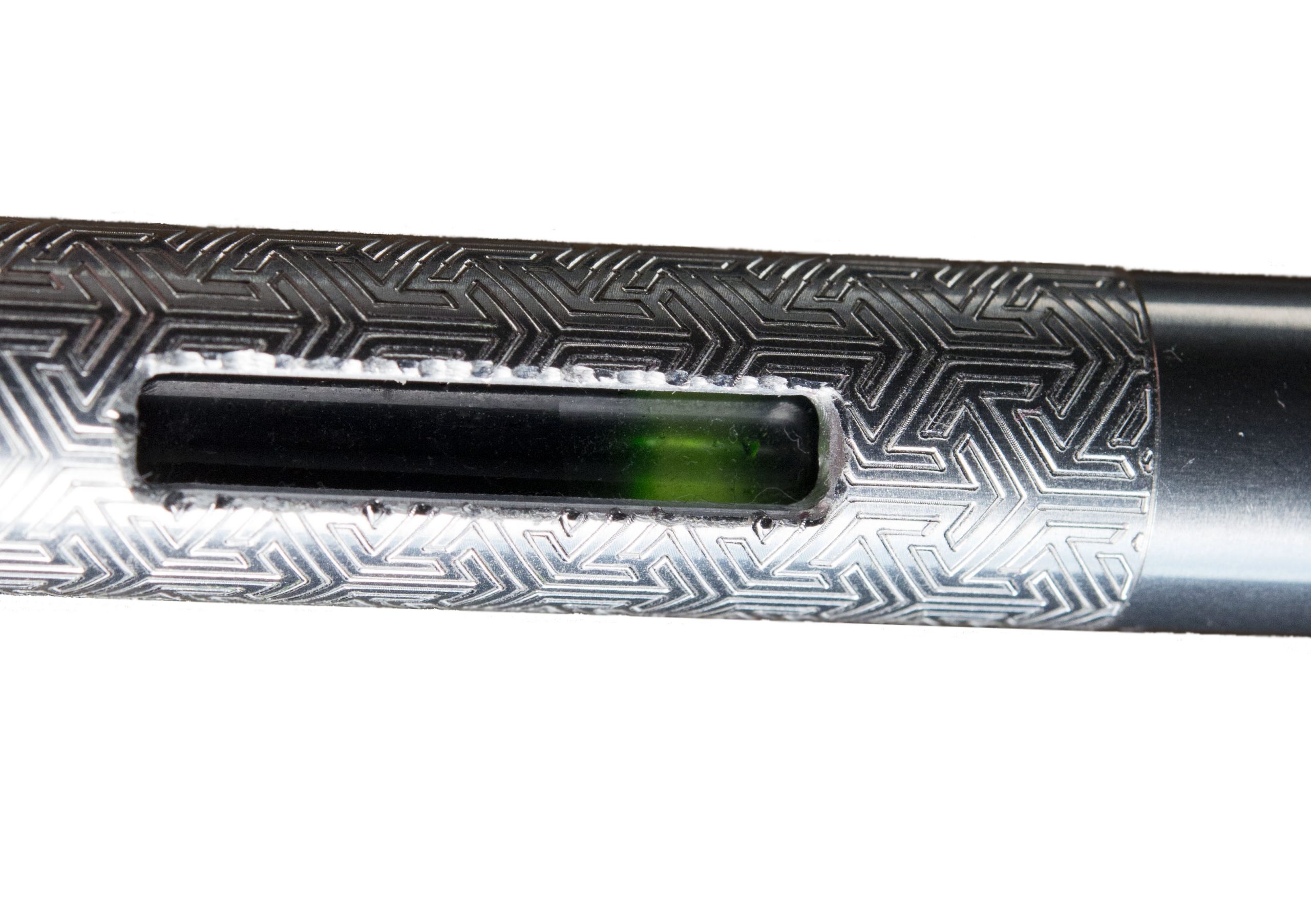 VFM It took us a little while to test this design, and the exact model is no longer on sale. But the Pocket Fox is similar, with a shorter international cartridge, for around £100 to £110 usually – not bad for a hand-made pen with an interesting finish and Geordie bragging rights.
VFM It took us a little while to test this design, and the exact model is no longer on sale. But the Pocket Fox is similar, with a shorter international cartridge, for around £100 to £110 usually – not bad for a hand-made pen with an interesting finish and Geordie bragging rights.
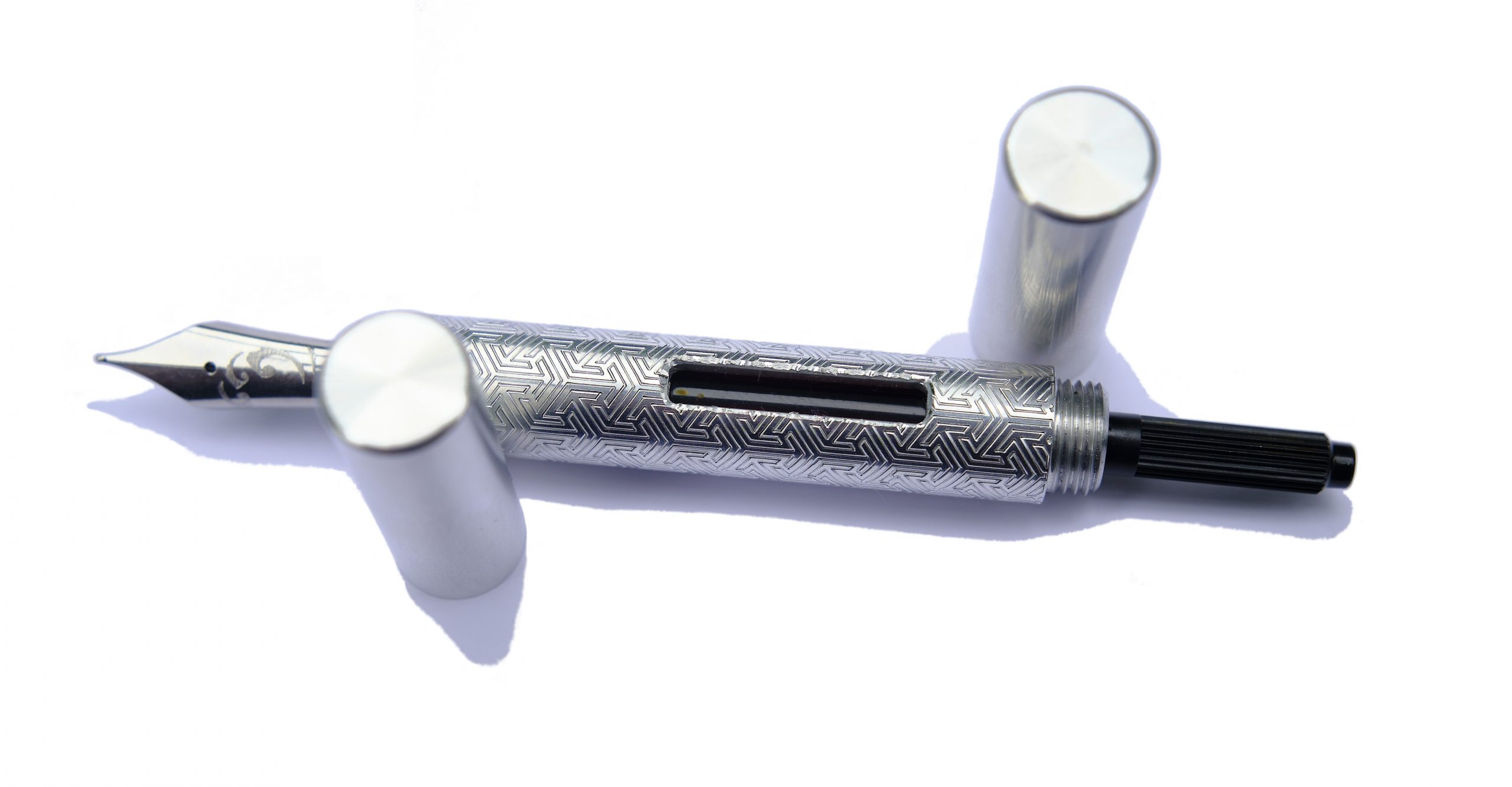 The only way is ethics It’s made by a human being who you can contact and have a chat with first, right here in Blighty, and packaged responsibly. What’s not to like?
The only way is ethics It’s made by a human being who you can contact and have a chat with first, right here in Blighty, and packaged responsibly. What’s not to like?
 If this isn’t quite your cup of tea, but almost… Go shorter or go longer, in, err, short. The cut-down version is now known as the ‘Pocket Fox’ and looks the business in all sorts of finishes. Fans of longer pens may prefer the gracefully curved Tombo, meanwhile.
If this isn’t quite your cup of tea, but almost… Go shorter or go longer, in, err, short. The cut-down version is now known as the ‘Pocket Fox’ and looks the business in all sorts of finishes. Fans of longer pens may prefer the gracefully curved Tombo, meanwhile.
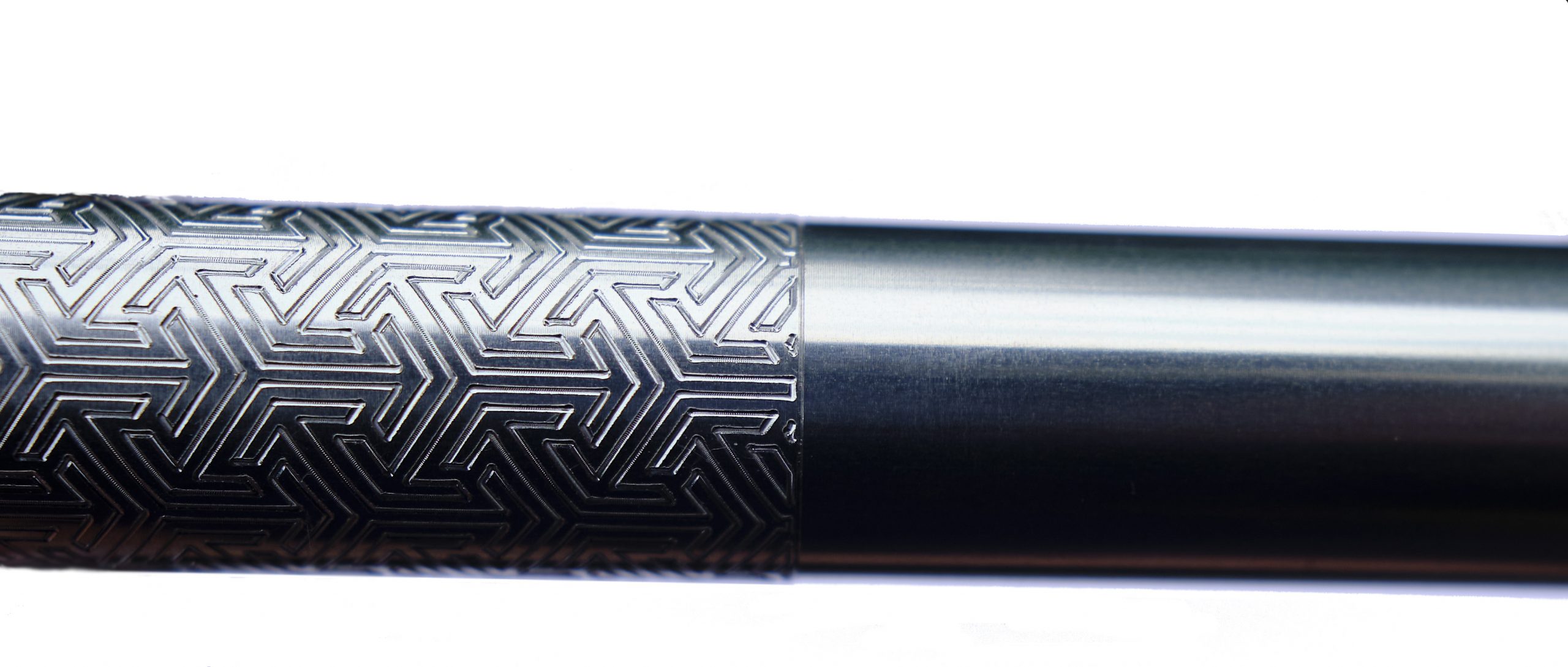 Our overall recommendation Find the right balance for you, then take the plunge.
Our overall recommendation Find the right balance for you, then take the plunge.
Where to get hold of one Direct from Ruth, the maker, either in person at a pen show or via her website.
This meta-review references:
Thanks to Ruth for the review sample
